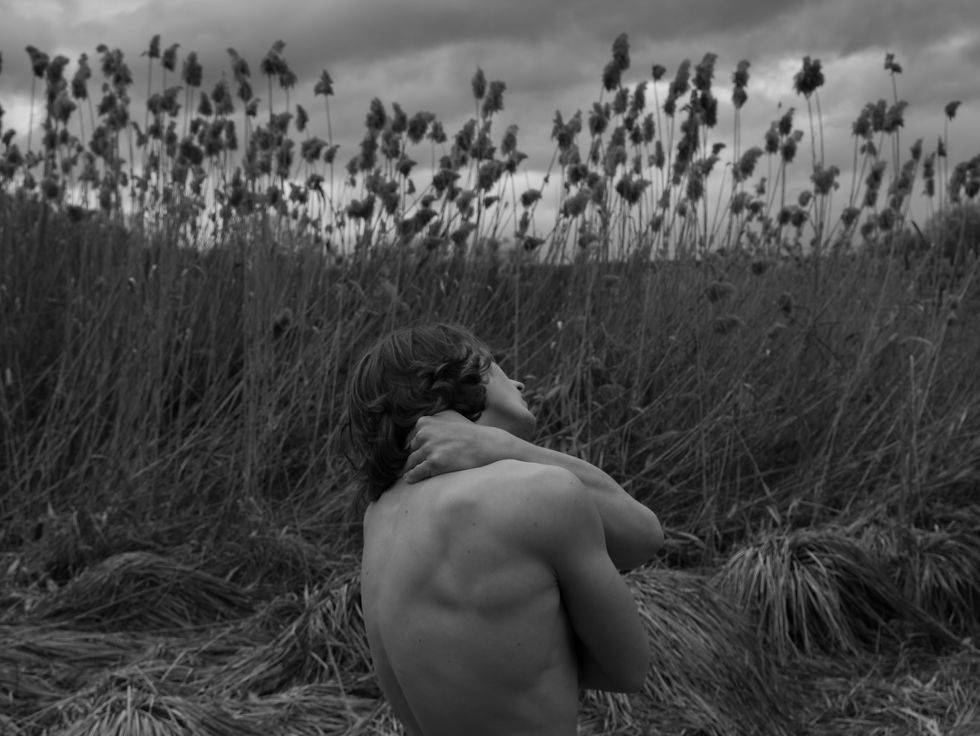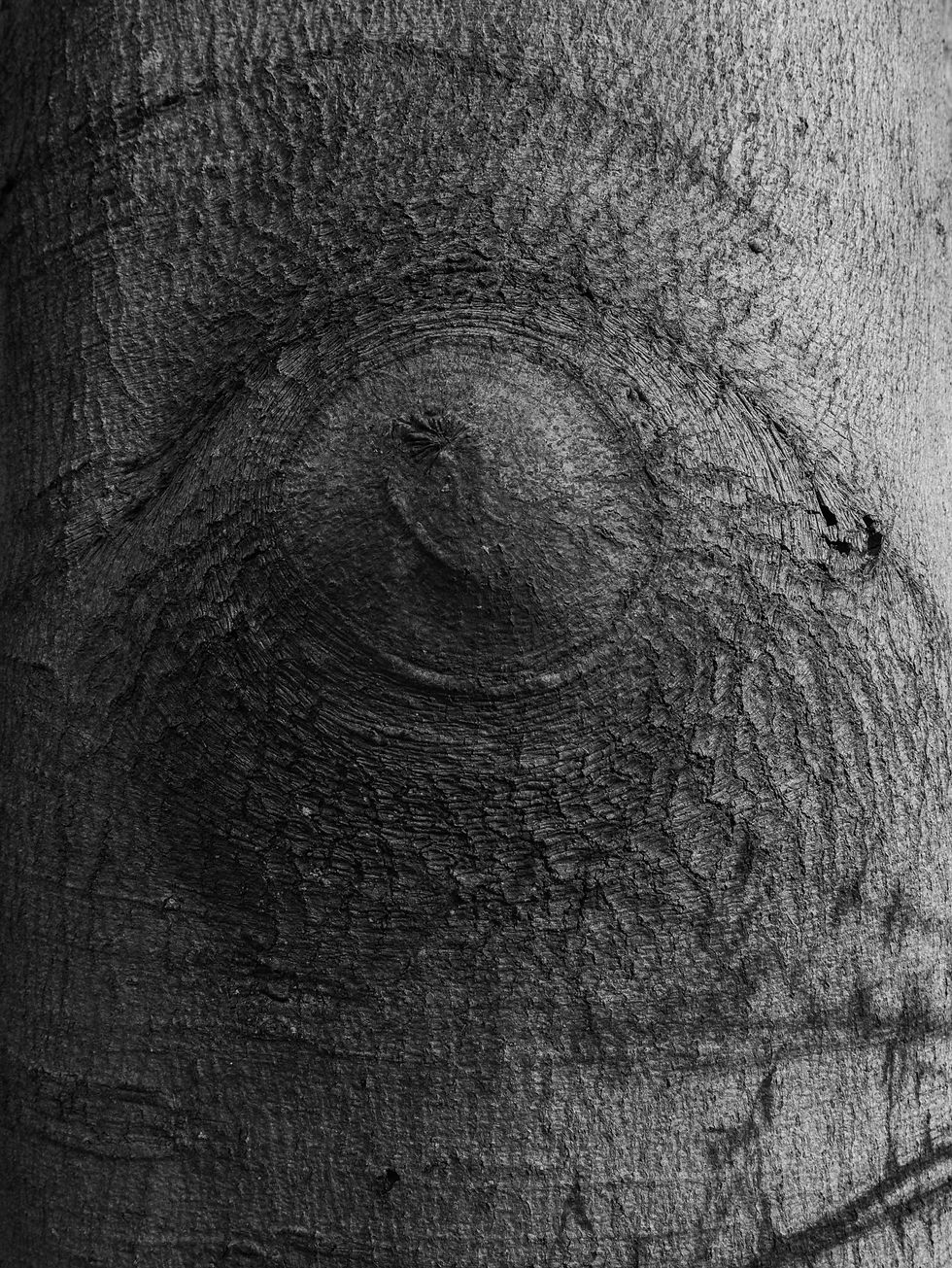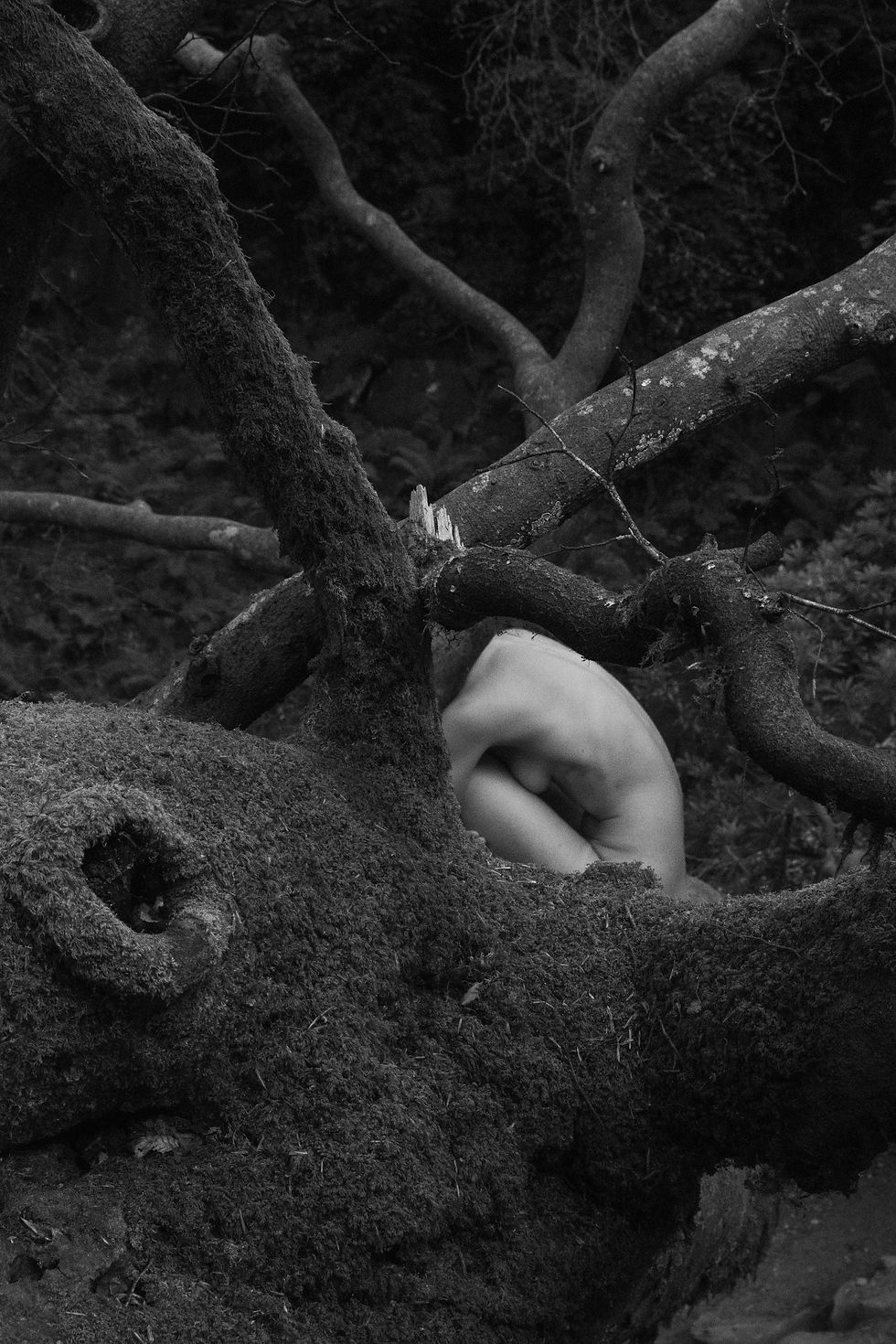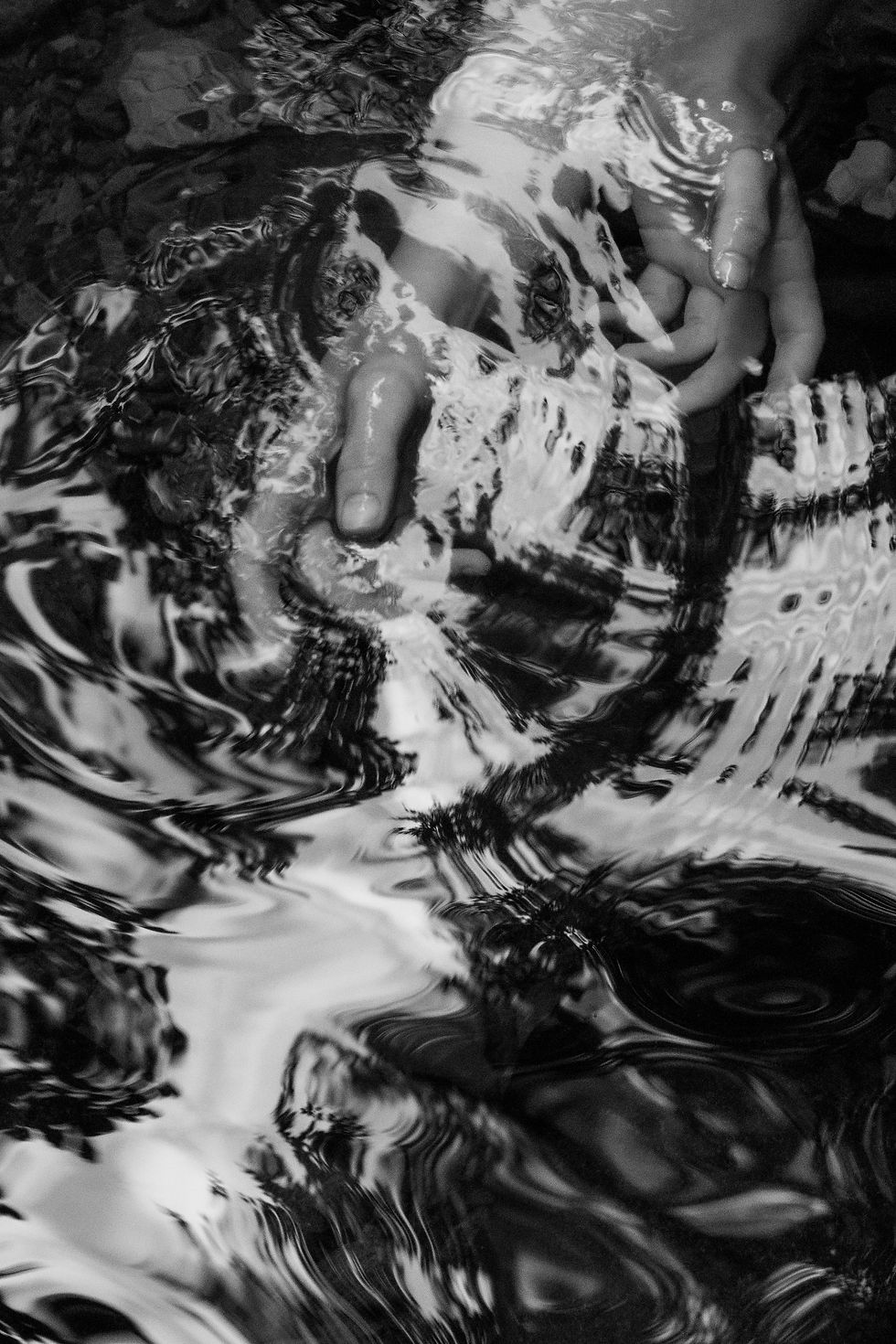Media Platform &
Creative Studio
Magazine - Features
In conversation: Džiuginta Mažulytė
Joana Alarcão
In this conversation, Lithuanian artist Džiuginta Mažulytė reveals the profound personal and philosophical foundations that drive her eco-somatic practice, tracing her artistic evolution from her childhood in her parents' post-Soviet photography shop to her current exploration of what theorist Karen Barad terms "intra-action" between humans and the more-than-human world. Through her lens, we encounter an artist who refuses the Western Cartesian separation between self and nature, instead drawing upon both contemporary new materialist theory and ancient Indigenous wisdom to create works that emerge not from staging or direction, but from genuine collaboration with landscape, light, and living systems.
7 August 2025



Džiuginta Mažulytė is a Lithuanian photographer based in London who holds a BSc in Psychology. Her practice explores the intra-action of homo sapiens and nature. Deeply interested in eco-somatics, she aims to transform personal and collective experiences with this practice into visual artworks. Mainly working with photography, Mažulytė attempts to shift the viewer’s gaze from an anthropocentric perspective towards the acknowledgment of the interconnectedness of all matter. Significantly inspired by the more-than-human, her experimentation leaks into digital, analogue and alternative processes.
As an introduction, can you lead us through the pivotal moments or experiences that led you to become the artist you are today?
My journey began in Lithuania, in my parents’ photography shop, just a few years after the country regained independence from the Soviet Union. I was only six, but everything around me felt important - cameras, film rolls, fragments of daily life being developed and held up to the light. That environment quietly taught me the significance of documentation and presence.
I always felt I was an artist, begging my parents to let me attend art school. But they didn’t have examples of creative careers in their world, and they wanted a “better” life for me. So, I turned toward psychology - another way to look deeper beneath the surface. That decision still informs my artistic practice deeply; the emotional, relational, and ecological psyche is always present in my work.
Eventually, I left Lithuania to study in England. That shift opened me to a different kind of freedom - mental, emotional, creative. Graduating into the silence of quarantine became a turning point. With nothing but time and uncertainty, my former lover and I began creating from a small flat we shared. That period taught me to dream again - intensely, deliberately.
I was also shaped by growing up surrounded by forest, where I learned my first language of kinship - listening, observing, attuning to the more-than-human. That rootedness continues to be the quiet backbone of everything I make.
In your statement, you mentioned that your work explores the intra-action of homo sapiens and nature. Could you elaborate on this Baradian term, its conceptual approach and how it informs your visual language?
“Intra-action,” as Karen Barad describes it, challenges the notion that beings exist independently and then relate. Instead, entities emerge through their relationships. This challenges the idea that humans hold exclusive agency and instead places us within a web of entanglements - with rocks, rivers, air, and everything in between.
Important to note here - in words of Toma Jucevičiūtė - that the post-anthropocentric interest in the agency and vitality of matter has long been a part of Indigenous cosmologies and is not something ‘discovered’ by the new materialists or Western scholars in general. The ecocentric view of fundamental interconnectedness amongst more-than-human agents ‘introduced’ by new materialisms, is what Indigenous Māori scholar Brendan Hokowhitu calls ‘Indigenous Cultures 101’. The theoretical turn away from the Cartesian binaries and humanist traditions underpinning Western thought has already been a part of Indigenous cosmologies for millennia, woven into their creation narratives.
I carry this understanding into my visual work. I don’t see myself as separate from nature or directing it - I collaborate with it. The land, the light, the weather, the more-than-human beings present in the moment - all are co-creators. I don’t stage my work; I listen, respond, and allow it to emerge through relationship.

Can you tell us more about your focus on eco-somatics and using this practice to transform personal and collective experiences into visual artworks?
Eco-somatics can be an unfamiliar term, but I see it as a way of dissolving the illusion of separation between body, mind, and environment. “I am other than” is a belief system that underpins much of our societal disconnection and allows systems like capitalism to thrive.
Practices like eco-somatics help blur those separations. They reconnect us to a deeper knowing that our bodies are not isolated from the Earth. I speak visually, and this is the language I use to communicate these ideas - through form, gesture, and presence within place.
"Symbiosis" explores the psychological toll of rising temperatures. What specific visual strategies did you employ to convey the feeling of "psychic distress" related to climate change?
The human figures in Symbiosis are nude, often curled into fetal or abstract positions - faces hidden, bodies tired. This is vulnerability in its rawest form, something we all instinctively understand.
By placing these familiar, exposed bodies in alignment with elements like a fallen tree and heavy rock, I attempt to make visible a shared exhaustion - not just human, but planetary. In doing so, I try to give voice to the silent companions of our ecological distress: the rocks, the trees, the water.

Given that "Symbiosis" was developed during a residency in the Lake District, UK, how did the specific landscape and ecology of that region shape the project's themes and visual outcomes?
The Lake District is ancient, alive, and deeply magical. It’s hard to describe the feeling of stepping into that place - the soil itself seems to radiate belonging.
Being there slowed me down, grounded me. I felt a need to care deeply for every plant, every element I encountered. Many of the works I created there came directly out of that love. It was a short stay, but the connection ran deep - something about the land made me feel welcomed, and the work responded to that.
If you could collaborate with any non-human entity (a plant, animal, ecosystem) to create an artwork, what would that collaboration look like?
I don’t think I’ve ever not collaborated with the more-than-human. Nothing in my work is staged or directed. I’m a vessel - an eye, a listener, a transmitter.
What I create emerges from natural encounters, guided by what’s already happening. The wind, the light, a tree leaning toward me - these are my collaborators. I follow their lead.

Do you see your photographic practice as a form of activism, research, or something else entirely?
I often ask myself this. My practice didn’t emerge from theory - it was born from feeling, from embodiment. It’s about remembering our place in the web of life and inviting others to remember too.
Maybe that’s its quiet form of activism: to serve as a reminder of belonging. And from that place of reconnection, perhaps action becomes inevitable.
Many artists working with ecological themes grapple with the tension between documenting environmental degradation and celebrating the beauty of nature. How do you balance these aspects in your work to avoid despair or romanticisation?
This is one of the most intricate tensions within ecological work. Grief and joy coexist - there are moments of deep despair, but also moments of complete wonder at simply breathing with a forest.
When I feel overwhelmed by either end of the spectrum, I turn to Octavia Butler’s words: “The only lasting truth is change.” I also find grounding in Robin Wall Kimmerer’s teachings. They help me come back to the core of what ecological art can offer: not answers, but reminders. And when in doubt, I return to my heart - it always knows.

Art and artists play various roles in the fabric of contemporary society. How do you see artistic practices advancing sustainability and social consciousness?
I see our society as a kind of mycelial network - interconnected and alive. We are profoundly each other.
Artists have the power to dream, and that’s something many of us have forgotten how to do. To imagine new ways of being, to embody those visions, and to offer them to the world - that’s one way to tend the ripped parts of the fabric.
What message or call to action would you like to share with our readers?
“No one has ever hated themselves into a better life. No society has ever shamed itself into collective liberation without leaving someone behind. Love is our politics, our strategy, our path forward. Love is our North Star.” -Erotics of Liberation
&
“Gratitude is the thread that connects us to the Earth. It reminds us of our responsibilities, and it teaches us to live with respect, reciprocity, and reverence.” -Robin Wall Kimmerer
Learn more about the artist here.
Cover image:
Symbiosis by Džiuginta Mažulytė.
All images courtesy of Džiuginta Mažulytė.


_Lauren%20Saunders.jpg)

